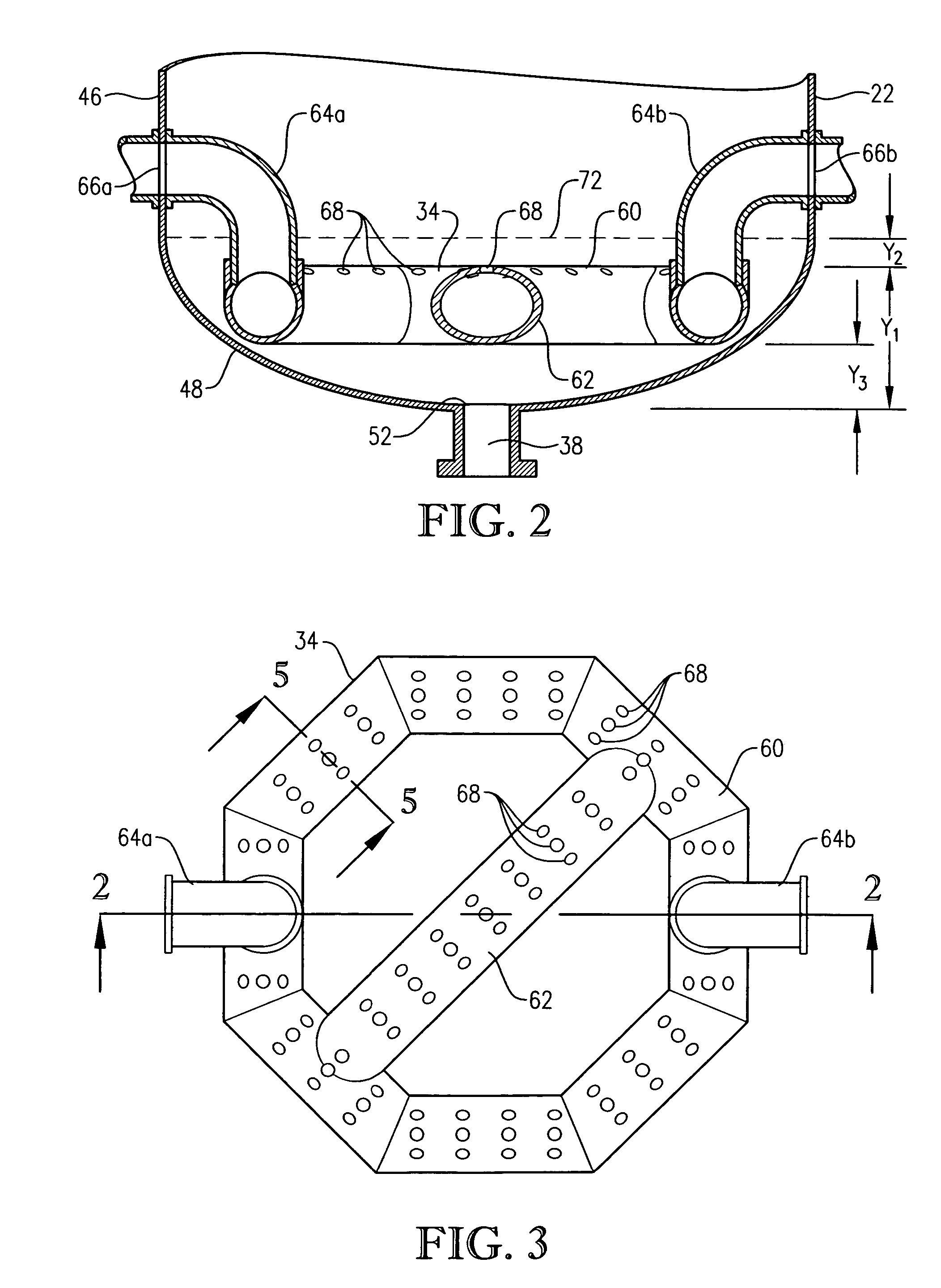Optimized liquid-phase oxidation
a technology of aromatic compound and liquid phase, which is applied in the preparation of carboxylic compounds, organic chemistry, chemistry apparatus and processes, etc., can solve the problems of unfavorable cstrs, unfavorable cstrs, and high capital costs of cstrs
- Summary
- Abstract
- Description
- Claims
- Application Information
AI Technical Summary
Benefits of technology
Problems solved by technology
Method used
Image
Examples
example 1
[0286]This is an operational example from a commercial oxidation of para-xylene in a bubble column reactor. This example demonstrates, for example, that large vertical gradients exist for concentrations of para-xylene when appropriate geometric and process conditions are employed according to aspects of the current invention.
[0287]This example employed a commercial bubble column oxidizer vessel having a nearly vertical, essentially cylindrical body with an inside diameter of about 2.44 meters. The height of the bubble column oxidizer vessel was about 32 meters from lower tangent line (TL) to upper TL. The vessel was fitted with about 2:1 elliptical heads at the top and bottom of the cylinder. The operating level was about 25 meters of reaction medium above the lower TL. The feed rate of commercial-purity para-xylene was effectively steady at a rate of about 81 kilograms per minute, entering the reaction vessel through a circular hole located in the wall of the cylindrical section at...
examples 2-5
[0295]Examples 2-5 are calculational models of bubble column reactors either identical to the reactor of Example 1 or generally similar with specified improvements. The computational fluid dynamics (CFD) modeling performed to generate Examples 2-5 was performed in accordance with the modeling method disclosed in co-pending U.S. Pat. App. Ser. No. 60 / 594,774 entitled “Modeling of Liquid-Phase Oxidation,” the entire disclosure of which is expressly incorporated herein by reference.
[0296]In Examples 2-5, the CFD modeling is performed using CFX release 5.7 (ANSYS, Inc. 275 Technology Drive, Canonsburg, Pa. 15317). Examples 2-5 comprise upwards of about 100,000 discrete spatial computational cells each. Time steps useful in Examples 2-5 are less than 0.1 seconds. Multiple bubble sizes ranging in diameter from about 0.005 to about 0.20 meters prove useful to tune the CFD model to approximate closely to the average bubble hold-up assessed via differential pressure measurement, to the verti...
example 2
[0299]This example develops calculations pertinent to the mechanical configuration of Example 1 and sets a comparative basis for Examples 3 and 4. In this example, the mechanical configuration of the bubble column reactor is identical to Example 1, having a 0.076-meter circular diameter entry hole through the reaction vessel wall for the feed stream comprising para-xylene and filtrate solvent. The feed rate of para-xylene is about 1.84 kilograms per second, higher than in Example 1. The feed rate of filtrate solvent fed intimately commingled with the para-xylene is about 18.4 kilograms per second. The superficial velocity of the combined stream of para-xylene plus filtrate solvent entering through the wall hole is thus about 4 meters per second. The feed rate of reflux solvent in to the gas disengaging head space is 12.8 kilograms per second. The feed rate of compressed air through the oxidant sparger is about 9 kilograms per second. The solids content of the reaction slurry is abou...
PUM
| Property | Measurement | Unit |
|---|---|---|
| weight percent | aaaaa | aaaaa |
| weight percent | aaaaa | aaaaa |
| weight percent | aaaaa | aaaaa |
Abstract
Description
Claims
Application Information
 Login to View More
Login to View More - R&D
- Intellectual Property
- Life Sciences
- Materials
- Tech Scout
- Unparalleled Data Quality
- Higher Quality Content
- 60% Fewer Hallucinations
Browse by: Latest US Patents, China's latest patents, Technical Efficacy Thesaurus, Application Domain, Technology Topic, Popular Technical Reports.
© 2025 PatSnap. All rights reserved.Legal|Privacy policy|Modern Slavery Act Transparency Statement|Sitemap|About US| Contact US: help@patsnap.com



